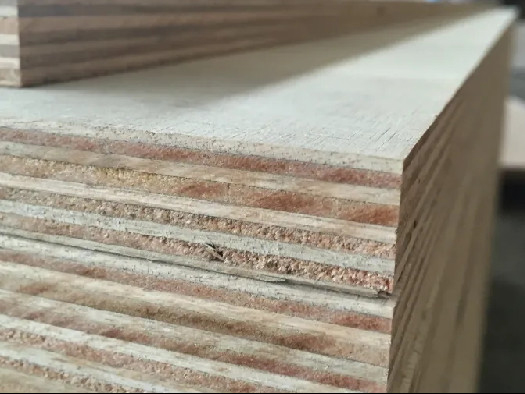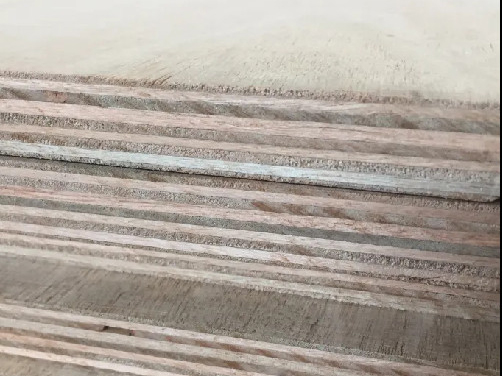(1) It is divided into ordinary plywood and special plywood according to its purpose.
(2) Ordinary plywood is divided into Class I plywood, Class II plywood, and Class III plywood, which are respectively weather resistant, water resistant, and non moisture resistant.
(3) Ordinary plywood is divided into unsanded and sanded boards based on whether the surface is sanded or not.
(4) According to tree species, it is divided into coniferous plywood and broad -leaved plywood.


Classification, characteristics, and scope of application of ordinary plywood
| Class I (NQF) weather and boiling water resistant plywood | WPB | It has durability, resistance to boiling or steam treatment, and antibacterial properties. Made of phenolic resin adhesive or other high-quality synthetic resin adhesive with equivalent properties | Outdoor | Used in aviation, ships, carriages, packaging, concrete formwork, hydraulic engineering, and other places that require good water and weather resistance |
| Class II (NS) water resistant plywood | WR | Capable of immersion in cold water, able to withstand short-term hot water immersion, and has antibacterial properties, but not resistant to boiling. It is made of urea formaldehyde resin or other adhesive with equivalent properties | Indoor | Used for interior decoration and packaging of carriages, ships, furniture, and buildings |
| Class III (NC) moisture resistant plywood | MR | Capable of short-term cold water immersion, suitable for indoor use under normal conditions. Made by bonding with low resin content urea formaldehyde resin, blood glue, or other adhesives with equivalent properties | Indoor | Used for furniture, packaging, and general building purposes
|
| (BNS) non moisture resistant plywood | INT | Used indoors under normal conditions, it has a certain bonding strength. Made by bonding with bean glue or other adhesive with equivalent properties | Indoor | Mainly used for packaging and general purposes. The tea box needs to be made of bean glue plywood |
| Note: WPB - boiling water resistant plywood; WR - water resistant plywood; MR - Moisture resistant plywood; INT - water resistant plywood. | ||||
Classification Terms and Definitions for Plywood (GB/T 18259-2018)
| composite plywood | The core layer (or certain specific layers) is composed of materials other than veneer or solid wood, and each side of the core layer has at least two interlaced layers of veneer components glued together to form artificial boards. |
| symmetrical structure plywood |
The veneers on both sides of the central layer correspond to the same plywood in terms of tree species, thickness, texture direction, and physical and mechanical properties. |
| plywood for general use |
Ordinary purpose plywood. |
| plywood for specific use | Plywood with certain special properties suitable for special purposes. (Example: Ship plywood, fire-resistant plywood, aviation plywood, etc.) |
| aviation plywood | A special plywood made by pressing a combination of birch or other similar tree species veneer and phenolic adhesive paper. (Note: Mainly used for aircraft component manufacturing) |
| marine plywood | A type of high water resistance special plywood made by hot pressing and bonding the surface boardsoaked with phenolic resin adhesive and the core board coated with phenolic resin adhesive. (Note: Mainly used in the manufacturing of ship components) |
| difficult-flammable plywood |
The combustion performance meets the requirements of GB 8624 Β Plywood and its surface decoration products with Level 1 requirements. |
| insect resistant plywood |
Special plywood with insect repellent added to veneer or adhesive, or treated with insect repellent to prevent insect invasion. |
| preservative-treated plywood | Special plywood with the function of preventing fungal discoloration and decay by adding preservatives to the veneer or adhesive, or by treating the product with preservatives. |
| plybamboo | Plywood made from bamboo as raw material according to the principle of plywood composition. (Note: including bamboo plywood, bamboo strip plywood, bamboo woven plywood, bamboo curtain plywood, composite bamboo plywood, etc.) |
| strip plybamboo | Bamboo plywood is made by using bamboo sheets as the constituent units and applying glue to the preform. |
| sliver plybamboo | Bamboo plywood is made from bamboo strips as the constituent unit and pressed by applying glue to the preform. (Note: including bamboo woven plywood, bamboo curtain plywood, and bamboo strip laminated plywood, etc.) |
| woven mat plybamboo |
A bamboo plywood made by interweaving bamboo strips into bamboo mats, and then applying glue to press the blank. |
| curtain plybamboo | A bamboo plywood made by weaving bamboo strips into a bamboo curtain and then applying glue to press the blank. |
| composite plybamboo |
Bamboo plywood is made by applying glue to different components such as bamboo sheets, bamboo strips, and bamboo veneers, and pressing them according to certain rules. |
| wood-bamboo composite plywood |
The plywood is made of various sheet materials processed from bamboo and wood processing and glued together after gluing. |
| class Ⅰ plywood | Climate resistant plywood that can be used outdoors through boiling tests. |
| class Ⅱ plywood | Water-resistant plywood that can pass the hot water immersion test at 63 ℃± 3 ℃ for use under humid conditions. |
| class Ⅲ plywood | Non moisture resistant plywood that can pass the dry test and be used under dry conditions. |
| interior type plywood |
Plywood made with urea formaldehyde resin adhesive or adhesive with equivalent performance cannot withstand long-term water immersion or high humidity, and is limited to indoor use. |
| exterior type plywood |
Plywood made with phenolic resin adhesive or equivalent resin as an adhesive has weather resistance, water resistance, and high humidity resistance, making it suitable for outdoor use. |
| structural plywood | Plywood can be used as a load-bearing structural component for buildings. |
| plywood for concrete-form |
Plywood that can be used as a concrete forming mold. |
| long-grain plywood | Plywood with wood grain direction parallel or approximately parallel to the length direction of the board |
| cross-grain plywood | Plywood with wood grain direction parallel or approximately parallel to the width direction of the board. |
| multi-plywood | Plywood made by pressing five or more layers of veneer. |
| moulded plywood | A non planar plywood made by forming a slab with adhesive coated veneer according to certain requirements and hot pressing it in a specific shaped mold. |
| scarf joint plywood | The end of the plywood along the grain direction is processed into an inclined plane, and the plywood is overlapped and lengthened with adhesive coating. |
| finger joint plywood | The end of the plywood along the grain direction is processed into a finger shaped tenon, and the plywood is extended through adhesive finger joint. |
Post time: May-10-2023
